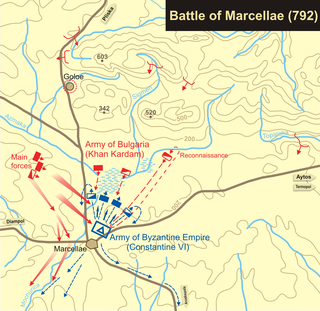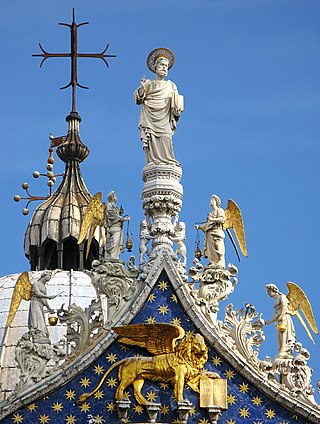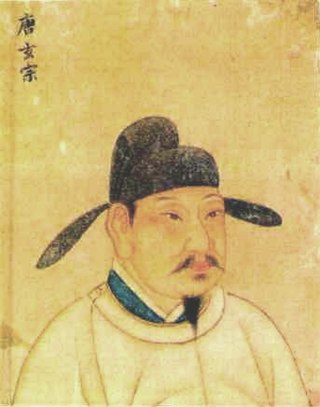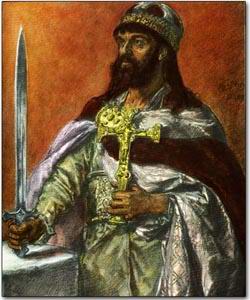The 800s decade ran from January 1, 800, to December 31, 809.
The 830s decade ran from January 1, 830, to December 31, 839.
The 790s decade ran from January 1, 790, to December 31, 799.
The 780s decade ran from January 1, 780, to December 31, 789.
The 760s decade ran from January 1, 760, to December 31, 769.

Year 787 (DCCLXXXVII) was a common year starting on Monday of the Julian calendar. The denomination 787 for this year has been used since the early medieval period, when the Anno Domini calendar era became the prevalent method in Europe for naming years.
The 690s decade ran from January 1, 690, to December 31, 699.

Year 806 (DCCCVI) was a common year starting on Thursday of the Julian calendar.

Year 751 (DCCLI) was a common year starting on Friday of the Julian calendar. The denomination 751 for this year has been used since the early medieval period, when the Anno Domini calendar era became the prevalent method in Europe for naming years.

Year 790 (DCCXC) was a common year starting on Friday of the Julian calendar. The denomination 790 for this year has been used since the early medieval period, when the Anno Domini calendar era became the prevalent method in Europe for naming years.

Year 792 (DCCXCII) was a leap year starting on Sunday of the Julian calendar. The denomination 792 for this year has been used since the early medieval period, when the Anno Domini calendar era became the prevalent method in Europe for naming years.

Year 823 (DCCCXXIII) was a common year starting on Thursday of the Julian calendar.

Year 830 (DCCCXXX) was a common year starting on Saturday of the Julian calendar.

Year 832 (DCCCXXXII) was a leap year starting on Monday of the Julian calendar, the 832nd year of the Common Era (CE) and Anno Domini (AD) designations, the 832nd year of the 1st millennium, the 32nd year of the 9th century, and the 3rd year of the 830s decade.

Year 851 (DCCCLI) was a common year starting on Thursday of the Julian calendar.

Year 865 (DCCCLXV) was a common year starting on Monday of the Julian calendar.

Year 730 (DCCXXX) was a common year starting on Sunday of the Julian calendar. The denomination 730 for this year has been used since the early medieval period, when the Anno Domini calendar era became the prevalent method in Europe for naming years.

Year 960 (CMLX) was a leap year starting on Sunday of the Julian calendar.

Emperor Suzong of Tang, personal name Li Heng, né Li Sisheng (李嗣升), known as Li Jun (李浚) from 725 to 736, known as Li Yu (李璵) from 736 to 738, known briefly as Li Shao (李紹) in 738, was an emperor of the Tang dynasty and the son of Emperor Xuanzong. Suzong ascended the throne after his father fled to Sichuan during the An Lushan Rebellion in 756; Li Heng himself had fled in the opposite direction, to Lingwu, where he was declared emperor by the army. Much of Emperor Suzong's reign was spent in quelling the aforementioned rebellion, which was ultimately put down in 763 during the reign of his son Emperor Daizong.
Li Fuguo, né Li Jingzhong (李靜忠), known from 757 to 758 as Li Huguo (李護國), formally Prince Chou of Bolu (博陸醜王), was a Chinese eunuch, military general, monarch, and politician during the reign of Emperor Suzong of the Chinese Tang dynasty. He had served Li Heng while Li Heng was crown prince under Li Heng's father Emperor Xuanzong and later supported Li Heng in ascending the throne during Anshi Rebellion, when Emperor Xuanzong's realm was thrown into confusion. He later became exceedingly powerful, in alliance with Emperor Suzong's wife Empress Zhang, but broke with her and killed her in 762 when Emperor Suzong died. He briefly became the paramount figure in the administration of Emperor Suzong's son and successor Emperor Daizong, but was removed and then killed by assassins sent by Emperor Daizong later that year.












